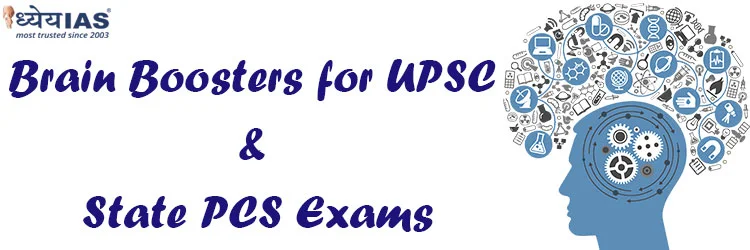Current Affairs Brain Booster for UPSC & State PCS Examination
Topic: Science Technology and Innovation Policy

Why in News?
- Department of Science and Technology (DST) recently released a draft of the fifth Science, Technology and Innovation Policy (STIP) for public feedback.
Background
- The DST, along with the Office of Principal Scientific Adviser, started the process of formulating the STIP 2020 last year. The policy was to be out by the year-end but has been slightly delayed due to the coronavirus pandemic.
- The draft STIP has been uploaded by the DST on its website. The DST has also invited suggestions, inputs and comments for making changes by January 25.
- The new policy, STIP, revolves around the core principles of being decentralized, evidenceinformed, bottom-up, experts-driven, and inclusive.
- Also, it aims to bring in the concept of dynamic policy with a robust policy governance mechanism incorporating features such as implementation strategy, periodic review, policy evaluation, feedback, and adaptation, and most importantly, a timely exit strategy for various policy instruments.
- For the first time, the states as well the diaspora were consulted in making the science policy
Vision Guiding the Policy
- To achieve technological self-reliance and position India among the top three scientific superpowers in the decade to come.
- To attract, nurture, strengthen and retain critical human capital through a ‘people centric’ science, technology and innovation (STI) ecosystem.
- To double the number of Full-Time Equivalent (FTE) researchers, Gross Domestic Expenditure on R&D (GERD) and private sector contribution to the GERD every 5 years.
- To build individual and institutional excellence in STI with the aspiration to achieve the highest level of global recognitions and awards in the coming decade.
Major Proposals
- Establishment of a National STI Observatory that will act as a central repository for all kinds of data related to and generated from the STI ecosystem.
- Strategies to improve STI education making it inclusive at all levels and more connected with the economy and society will be developed through processes of skill building, training and infrastructure development.
- Open Science Framework will be built to provide access to scientific data, information, knowledge, and resources to everyone in the country and all who are engaging with the Indian STI ecosystem on an equal partnership basis.
- The policy will promote technology self-reliance and indigenization to achieve the larger goal of “Atmanirbhar Bharat”.
- An India-centric Equity & Inclusion (E&I) charter will be developed for tackling all forms of discrimination, exclusions and inequalities in STI leading to the development of an institutional mechanism. The Lesbian, Gay, Bisexual, Transgender, Queer (LGBTQ+) community will be included in gender equity conversations with special provisions to safeguard their rights and promote their representation and retention in STI.
- Differently-abled individuals, including Divyangjans, will be given special attention.
- The policy also talks about ageism-related issues while minimisation of career breaks are to be addressed for effective retention of trained women into the STI workforce.
- STIP charts pathways to a dynamic, evidence-informed and proactive international S&T engagement strategy. Engagement with the Diaspora will be intensified through attracting the best talent back home through fellowships, internships schemes and research opportunities expanded and widely promoted across different ministries.
Significance of STIP
- The new Science, Technology, and Innovation Policy aims to bring about
profound changes through shortterm, medium-term, and long-term mission mode
projects by building a nurtured ecosystem that promotes
research and innovation on the part of both individuals and organizations. - It aims to foster, develop, and nurture a robust system for evidence and stakeholder-driven STI planning, information, evaluation, and policy research in India.
- The objective of the policy is to identify and address strengths and weaknesses of the Indian STI ecosystem to catalyse socio-economic development of the country and also make the Indian STI ecosystem globally competitive.









